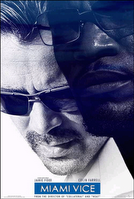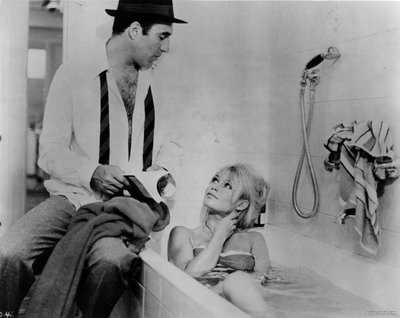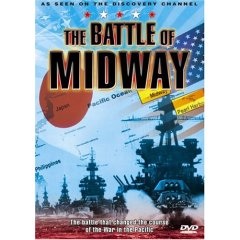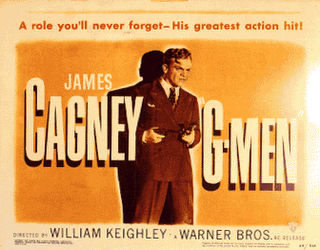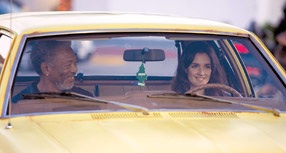 Looking over the standouts of this year’s movie releases it occurs to me that this was a year in film that had a social, political, and cultural conscience. I would argue that all movies have at least an inkling of a political or social agenda, but this year it is particularly overt, with ambitious cultural films like Alejandro González Iñárritu’s Babel that links Mexican, Moroccan, Japanese, and American life in one narrative thread, to a lighter (much lighter) film like Sacha Baron Cohen’s Borat: Cultural Learnings of America for Make Benefit Glorious Nation of Kazakhstan (directed by Larry Charles), a look at American culture that is so in-your-face that it is brilliantly embarrassing, and hilarious.
Looking over the standouts of this year’s movie releases it occurs to me that this was a year in film that had a social, political, and cultural conscience. I would argue that all movies have at least an inkling of a political or social agenda, but this year it is particularly overt, with ambitious cultural films like Alejandro González Iñárritu’s Babel that links Mexican, Moroccan, Japanese, and American life in one narrative thread, to a lighter (much lighter) film like Sacha Baron Cohen’s Borat: Cultural Learnings of America for Make Benefit Glorious Nation of Kazakhstan (directed by Larry Charles), a look at American culture that is so in-your-face that it is brilliantly embarrassing, and hilarious.  This year one of history’s greatest directors died, Robert Altman, who in his final film, A Prairie Home Companion, showed us a slice of Midwestern manner and life. Zhang Yimou gave us Riding Alone for Thousands of Miles, that is premised on cultural clashes among language, physical space, and differences in human manner. Will Farrell even took a jab at Southern and rural Nascar culture in Talledega Nights: The Ballad of Ricky Bobby, and we saw the creation of Dave Chappelle’s hip-hop concert, a virtual tour through black hip-hop culture set smack in the heart of Brooklyn, in Block Party (directed by Michel Gondry).
This year one of history’s greatest directors died, Robert Altman, who in his final film, A Prairie Home Companion, showed us a slice of Midwestern manner and life. Zhang Yimou gave us Riding Alone for Thousands of Miles, that is premised on cultural clashes among language, physical space, and differences in human manner. Will Farrell even took a jab at Southern and rural Nascar culture in Talledega Nights: The Ballad of Ricky Bobby, and we saw the creation of Dave Chappelle’s hip-hop concert, a virtual tour through black hip-hop culture set smack in the heart of Brooklyn, in Block Party (directed by Michel Gondry). It was also a year of historical films. Paul Greengrass’s United 93 and Oliver Stone’s World Trade Center
 took us back to 9/11, for a look at the terrorist attacks of 5 years ago, and neither try to create context for the events; in the eyes of these two films September 11th is a picture of the day as it happened, but from new perspectives. Greengrass’s picture doesn’t sentimentalize the event in the same way as WTC, in fact it does not at all, which in my view is what makes United 93 as devastating and intriguing as it is. Nonetheless, Oliver Stone surprised us all when he took a break from his typical myth-laden revisionist history approach, which often descends into very entertaining conspiracy theory, and simply told a story with a gentle, albeit sentimental, voice.
took us back to 9/11, for a look at the terrorist attacks of 5 years ago, and neither try to create context for the events; in the eyes of these two films September 11th is a picture of the day as it happened, but from new perspectives. Greengrass’s picture doesn’t sentimentalize the event in the same way as WTC, in fact it does not at all, which in my view is what makes United 93 as devastating and intriguing as it is. Nonetheless, Oliver Stone surprised us all when he took a break from his typical myth-laden revisionist history approach, which often descends into very entertaining conspiracy theory, and simply told a story with a gentle, albeit sentimental, voice. In the same vein of anti-revisionist history was Clint Eastwood’s Flags of Our Fathers (and I suspect Letters from Iwo Jima despite not having seen it yet— it does not open in Chicago until January.) I carefully tread on this term “anti-revisionist” because the film does provide a new perspective on WWII, that of the soldiers who raised the flag on the
 mountain of Iwo Jima; but it seemed careful to retell the event as plainly as it could, to expose the audience to an historical period that is slowly (and quite literally) dying out of America’s collective conscience. Looking back on my notes from when I saw Flags in October, I felt that this was a picture of events previously unseen, it is history first seen. The film works more like a memoir of the soldiers than a secondary historical document, with flashbacks that take us to the carnage of the days on Iwo Jima that are not a part of our collective understanding of the war. The image we have, and indeed that of the American public immediately following the soldiers’ return to the States, is of bravery and glory. Surely the soldiers are brave, but there is no sense of glory for them as they recall the circumstances of that famous photo being snapped. It is the memories, the unseen history of the soldiers who pushed that flag up that are absent from historical record, and Eastwood gives them substance, with integrity and grace.
mountain of Iwo Jima; but it seemed careful to retell the event as plainly as it could, to expose the audience to an historical period that is slowly (and quite literally) dying out of America’s collective conscience. Looking back on my notes from when I saw Flags in October, I felt that this was a picture of events previously unseen, it is history first seen. The film works more like a memoir of the soldiers than a secondary historical document, with flashbacks that take us to the carnage of the days on Iwo Jima that are not a part of our collective understanding of the war. The image we have, and indeed that of the American public immediately following the soldiers’ return to the States, is of bravery and glory. Surely the soldiers are brave, but there is no sense of glory for them as they recall the circumstances of that famous photo being snapped. It is the memories, the unseen history of the soldiers who pushed that flag up that are absent from historical record, and Eastwood gives them substance, with integrity and grace.Amidst theses historical pictures were still more. The Queen took us to the inside quarters of the royal family in the days following Princess Diana’s death, and Sofia Coppola’s Marie Antoinette, though lacking in substance, comes
 close to redeeming itself in style as it reexamines the life of the French ruler. There were smaller independent pictures like 10 Items or Less that showed us the differences in social behavior between the wealthy in Los Angeles and its poor ethnic residents; it was a film made quietly with earnest dialogue, and subtle discoveries of the mundane. Children of Men flash forwards to a dystopia where human reproduction and civilization are on the brink of extinction. Always showing us pictures from the present, like newspaper clippings and pictures that reference today’s involvement in Iraq, for instance; Children gives us a vision of what our political actions now may yield in the future.
close to redeeming itself in style as it reexamines the life of the French ruler. There were smaller independent pictures like 10 Items or Less that showed us the differences in social behavior between the wealthy in Los Angeles and its poor ethnic residents; it was a film made quietly with earnest dialogue, and subtle discoveries of the mundane. Children of Men flash forwards to a dystopia where human reproduction and civilization are on the brink of extinction. Always showing us pictures from the present, like newspaper clippings and pictures that reference today’s involvement in Iraq, for instance; Children gives us a vision of what our political actions now may yield in the future.There are a handful of exceptions to this politically active and culturally aware year in film. Darren Aronofsky’s The Fountain gave us a dizzying and sublime picture of eternal love that peels back years of emotion in the efficiency of seconds; in its crisp framing of images that is the border to something even bigger, The Fountain is a film of frames-within-frames, of seamless infinity. Martin Scorsese’s The Departed brought us back to his classic street gang gore that he is famously known for. His aesthetic technique, I would argue, is unchanged since the days of
 GoodFellas (1990) (and perhaps even earlier), and yet his stories still intrigue. By the time of The Aviator (2004) I started to look at Scorsese’s style as old hat, but there is too much gravity to his films, particularly The Departed to dismiss it as anything less than great (a fact that is undoubtedly helped along by the outstanding performance of Leonardo DiCaprio).
GoodFellas (1990) (and perhaps even earlier), and yet his stories still intrigue. By the time of The Aviator (2004) I started to look at Scorsese’s style as old hat, but there is too much gravity to his films, particularly The Departed to dismiss it as anything less than great (a fact that is undoubtedly helped along by the outstanding performance of Leonardo DiCaprio).  And Pan’s Labyrinth (which I saw less than an hour before the time of these writings) is a gorgeous and gory landscape that blends fairy tale and reality into one dimension; it is all at once spooky and mystical, frightening and yet full of wonder.
And Pan’s Labyrinth (which I saw less than an hour before the time of these writings) is a gorgeous and gory landscape that blends fairy tale and reality into one dimension; it is all at once spooky and mystical, frightening and yet full of wonder. But at the top of the list is Michael Mann’s Miami Vice. Though Mann’s picture takes us to exotic locales and shows us the workings of a culturally and ethnically diverse city like Miami, the film’s primary purpose is to reveal the dark side of undercover culture, which is much unlike the glossy pastels of Miami Vice the television series (where Mann is credited as producer and sometimes-writer). Mann proves his creative versatility with his expert use and inventive technique of digital technology; 2004’s Collateral showed us his first (and rather stunning) use of digital equipment, and this year he has out-maneuvered the men’s club of filmmakers around him with his subtle narrative, and his forward-thinking embrace of new technology. This year Mann proved himself as an evolving director that responds to the ever-changing world of filmmaking, without compromising the poetry of his characters and story, and the unspoken beauty of their motion.

I give you my top ten movies of 2006:
1. Miami Vice (Michael Mann)
2. Flags of Our Fathers (Clint Eastwood)
3. Children of Men (Alfonso Cuarón)
4. The Queen (Stephen Frears)
5. Volver (Pedro Almodóvar)
6. Pan’s Labyrinth (Guillermo del Toro)
7. Inside Man (Spike Lee)
8. Dave Chappelle’s Block Party (Michel Gondry)
9. United 93 (Paul Greengrass)
10. The Departed (Martin Scorsese)
Honorable Mentions: A Prairie Home Companion (Robert Altman), Mission: Impossible III (J.J. Abrams), Scoop (Woody Allen), Riding Alone for Thousands of Miles (Zhang Yimou), Off the Black (James Ponsoldt), The Fountain (Darren Aronofsky), Marie Antoinette (Sofia Coppola), Borat: Cultural Learnings of America for Make Benefit Glorious Nation of Kazakhstan (Larry Charles).
A few caveats: I could shed a tear that I haven’t seen David Lynch’s Inland Empire. As a huge fan of Lynch I know his latest epic would have a spot on my list, so you will have to grant me freedom to amend the top ten once Inland makes it to my city. Also, two other films that I had high hopes for but was unable to see are both Private Fears in Public Places (Alain Resnais) and Syndromes and a Century (Apichatpong Weerasethakul). Additionally, with all of his generosity, Mike Lyon has sent me a copy of Colossal Youth (Pedro Costa), which I have yet to view. I will be watching it in the next week, and if it turns out to be as fantastic as it is rumored, watch out for yet another amendment to my top ten.
Check out the Top Ten listings at Rob Sweeney and Matt Singer's site (with special guest Alberto Zambenedetti), at Termite Art; Michael Anderson, Lisa Broad, and Vicente Rodriguez-Ortega over at Tativille; and Mike Lyon at Fourteen Seconds, for the full picture of the greatest films of 2006!
Happy New Year!










